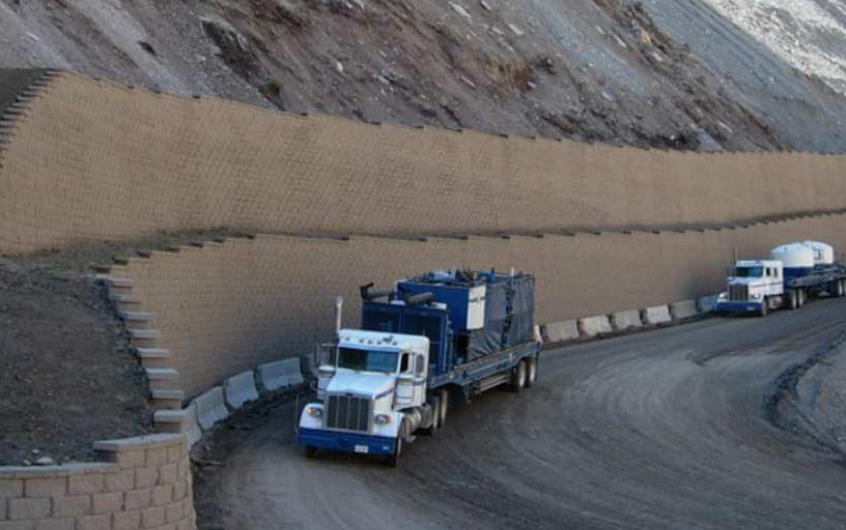MSE wall repair
Introduction
In civil engineering projects, MSE (Mechanically Stabilised Earth) walls are used to support slopes, embankments, and withstand lateral earth pressures. It may, however, eventually sustain deterioration or damage, just like any other retaining structure. Although MSE walls are repairable, MSE refers to the wall construction technique rather than the repair procedure. The term “MSE wall repair” is often used, but the methods for repairing these walls are generally the same as those used in the repair of other retaining walls.
What is MSE wall repair?
MSE wall repair means fixing any damage or failure in the structure. These walls are built by placing layers of soil with reinforcement—like geogrids or geotextiles—in between. It is mainly used to hold back soil and stabilise slopes.

Over time, damage can occur due to factors like erosion, drainage problems, or material degradation, and repairs are needed to maintain the wall’s integrity. MSE walls can be repaired using usual retaining wall repair methods, such as:
- Replacing or reinforcing damaged panels or structural elements.
- Addressing any drainage issues that may be causing water pressure buildup.
- Adding or repairing the geosynthetic layers (like geogrids or geotextiles) that reinforce the wall.
How is MSE wall repair done?
Repairing an MSE wall usually follows a few key steps, much like the process used for other types of retaining walls:
- Assessment: A thorough examination of the wall to find visible and hidden damage is the first step; This includes:
- Inspecting the facing panels for cracks or erosion.
- Examining the geosynthetic reinforcement for wear or deterioration.
- Analyzing the drainage systems to detect any blockages or malfunctions.
- Identification: After the assessment, the root causes of the damage—such as poor drainage, soil settlement, or excessive load—are identified. Addressing these causes is crucial for long-term stability.
- Stabilisation: Temporary measures may be applied to stabilize the structure and prevent further damage while repairs are underway.
- Excavation: Damaged sections of the wall, such as cracked panels or deteriorated reinforcement materials, are carefully removed.
- Repair and replacement: The structural integrity of the wall is restored by:
- Replacing damaged facing panels.
- Reinforcing or adding new geosynthetic layers to strengthen the wall.
- Reinforcement: Supplementary layers of geosynthetic materials, including geogrids or geotextiles, can be incorporated to improve the stability of the wall.
- Drainage Improvement: Proper drainage is critical for the long-term performance of MSE walls. This step involves:
- Installing or repairing drainage systems to prevent water pressure buildup.
- Ensuring effective water flow away from the structure.
- Monitoring: Following repairs, the wall undergoes consistent monitoring to verify its stability and operational effectiveness, thereby reducing the likelihood of subsequent damage.
Advantages of repairing MSE walls
- Cost-effective: Repairing an existing wall is often more economical than replacing it entirely. It can also be more sustainable, as it minimises the need for new materials.
- Extended lifespan: Repairing the wall helps to prolong the life of the structure by addressing current damage and averting future problems.
- Improved safety: Repairing potential hazards ensures the wall remains safe and stable for the future.
When to repair or replace an MSE wall?
Deciding if a wall should be repaired or replaced demands a meticulous examination. Essential elements include:
- Visual inspection: Inspecting the wall for cracks, erosion, or other visible signs of damage.
- Structural integrity: Evaluating whether the wall can still bear the necessary loads without risk of failure.
- Cost-benefit analysis: Comparing the costs of repair versus replacement to determine the most efficient option.
In various scenarios, wall repair is often enough to restore its functionality, yet in instances of extensive damage, a replacement could be essential. MSE walls face wear over time. Repair involves steps similar to other retaining walls—replacing damaged panels, strengthening the structure, and improving drainage. Timely repair stops further damage, keeps the wall safe, and extends its lifespan. This avoids the cost of complete replacement.
